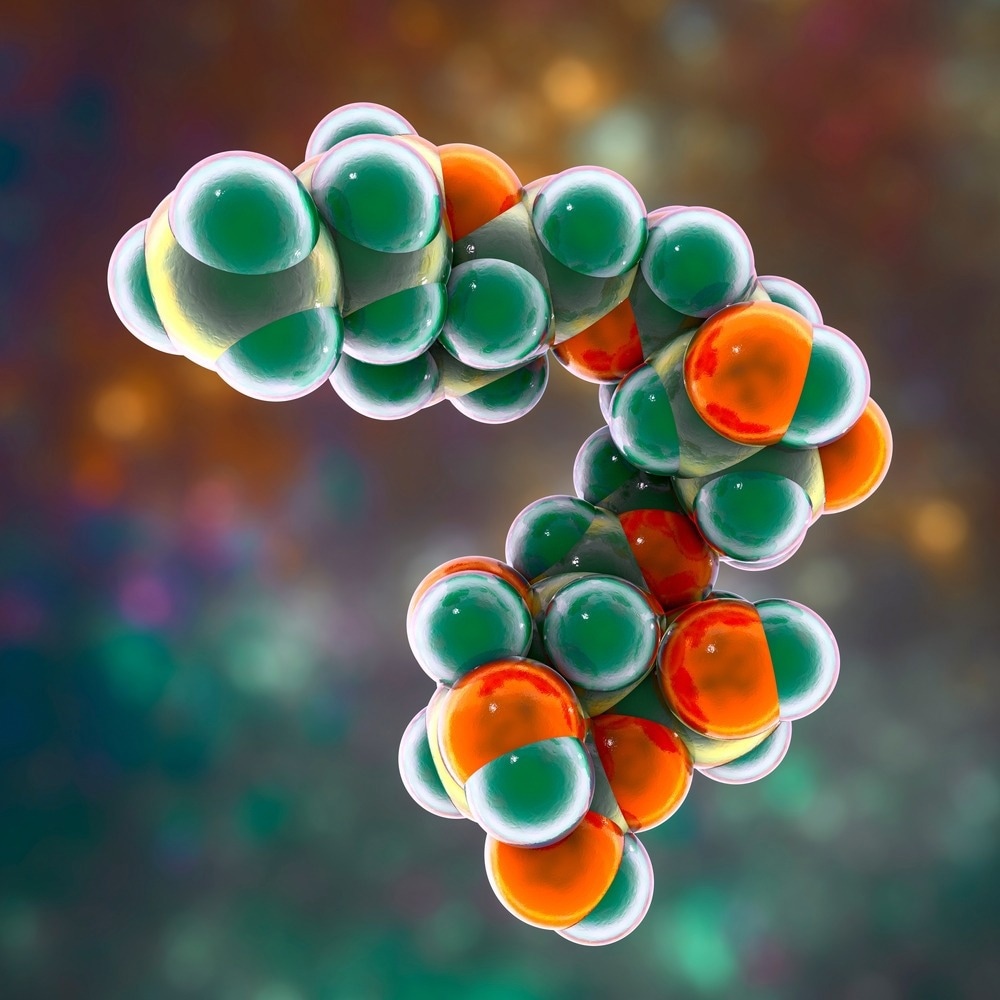In a paper published in the ACS Applied Energy Materials journal, researchers produced novel Au/K4−xHxNb6O17 nanocomposites by a single-step preparation in an aqueous medium surrounded by Au poly(ethyleneimine) (Au-PEI). The Au-PEI nanoparticles were immobilized by exploiting the intercalation chemistry of K4−xHxNb6O17 nanosheets. The nanocomposites prepared were successfully applied in photoinduced H2 evolution.

Study: Highly Stable Au/Hexaniobate Nanocomposite Prepared by a Green Intercalation Method for Photoinduced H2 Evolution Applications. Image Credit: Kateryna Kon/Shutterstock.com
Background
In the past decades, the production of high-performance photocatalysts by combining metal nanoparticles and metal oxides has been vastly explored. The semiconductor phase band gap excitation harvests the light, with metallic nanoparticles first working as electron acceptors and then promoting reduction reactions while acting as catalytic surfaces.
Noble metals such as Pt have been largely employed as catalytic surfaces for H2 evolution. However, due to the photosensitization of the semiconductor in the visible region, Au nanoparticles have been given significant attention. Other alternatives proposed include Cu0-based composites, which are relatively abundant.
Newer immobilization techniques, which take advantage of interlayer spaces, have also emerged with the rise of two-dimensional (2D) semiconductors such as Niobates. Niobates are known for their chemical stability and structural diversity but also for the right band position energies for H2 evolution.
About the Study
In this study, the researchers initially prepared K4Nb6O17.3H2O from K2CO3 and Nb2O5 using a solid-state reaction method. The exfoliated hexaniobate nanosheets were precipitated with HNO3. This was followed by the preparation of Au-PEI nanoparticles as a colloidal suspension with the particles having an average diameter of 13 nm. The gold nanoparticles were adsorbed into the hexaniobate nanosheets by suspending the exfoliated hexaniobate in 100 mL of deionized water, stirring for one day to let the pH stabilize.
Additionally, using the photodeposition method, the hexaniobate nanosheets were modified with plain Pt and Au nanoparticles. This was done to benchmark the photocatalytic performances of the Au-PEI nanocomposites. Samples were measured between pHs from two to 11, with NaOH and HCl solutions used for pH adjustment. The H2 evolution tests were conducted at 298K in an 18 mL, septum-sealed borosilicate double-walled reactor that was linked to a thermostatic bath.
Observations
The primary cause of the intercalation of Au nanoparticles within hexaniobate sheets is the mutual charge compensation of both materials. The Au-PEI and the hexaniobate were positively and negatively charged, respectively, when the nanocomposite was formed between a pH range of seven to nine. This maximized the electrostatic attraction between them.
Raman spectroscopy and X-ray diffraction (XRD) of the nanosheets showed no modification to their structure due to the intercalation of the Au-PEI nanoparticles into them. The Au-PEI/hexaniobate nanocomposites were examined for H2 evolution from 20% v/v methanol/ water mixtures under UV-vis light and compared with photodeposited hexaniobate samples with Au and Pt nanoparticles.
The Au-PEI hexaniobate nanocomposites showed slightly higher H2 evolution rates compared to that of the photodeposited Au/hexaniobate. It was inferred that the PEI layer on the Au-PEI/hexaniobate composite physically barred the proton diffusion up to the Au surface, thus decreasing the detected H2 evolution rate. Although this decrease was observed to be 30% in the Au-PEI-based composite, the decrease in H2 evolution observed in the photodeposited composite was 96%, thus confirming that the former is more stable under photocatalytic conditions.
Conclusions
To summarize, the team was successful in preparing Au-PEI/hexaniobate nanocomposites in a single-step green procedure. These composites were found to be significantly more stable than those prepared by photodeposition in the absence of poly(ethyleneimine) (PEI).
Based on detailed spectroscopic and morphologic investigations, the photocatalyst depicted improved stability with the use of Au-PEI nanoparticles, with the protonated PEI chains causing strong electrostatic interaction with the hexaniobate surface. Metal oxide photocatalysts with Au nanoparticles are well known for their instability. Particle agglomeration and leaching to the liquid phase are the two main factors contributing to the loss of photoactivity. However, the Au-PEI/hexaniobate composite showed leaching losses of less than 10% with no indication of agglomeration. This causes the loss of available catalytic sites at the Au surface because of the polymer layer.
Overall, in the long term, the Au-PEI/hexaniobate nanocomposite shows improved stability without leaching and agglomerating the nanoparticles. The proton diffusion through the polymer chain limits the expected increase in the H2 evolution, even with the more nonaggregate and homogeneous distribution. The optimization of H2 evolution demands further developments employing different imine polymers, while simultaneously maximizing both the photocatalytic rate and the stability of these nanocomposites. The authors suggest that this behavior of the Au/hexaniobate can provide new insights into the development of other photocatalysts based on 2D metal oxide semiconductors.
Disclaimer: The views expressed here are those of the author expressed in their private capacity and do not necessarily represent the views of AZoM.com Limited T/A AZoNetwork the owner and operator of this website. This disclaimer forms part of the Terms and conditions of use of this website.
Source:
Higor O. Alves, Brenda S. D. Frachoni, Barbara N. Nunes, Priscila R. Teixeira, Roberto M. Paniago, Detlef W. Bahnemann, et al., Highly Stable Au/Hexaniobate Nanocomposite Prepared by a Green Intercalation Method for Photoinduced H2 Evolution Applications, ACS Applied Energy Materials, https://pubs.acs.org/doi/10.1021/acsaem.2c00918